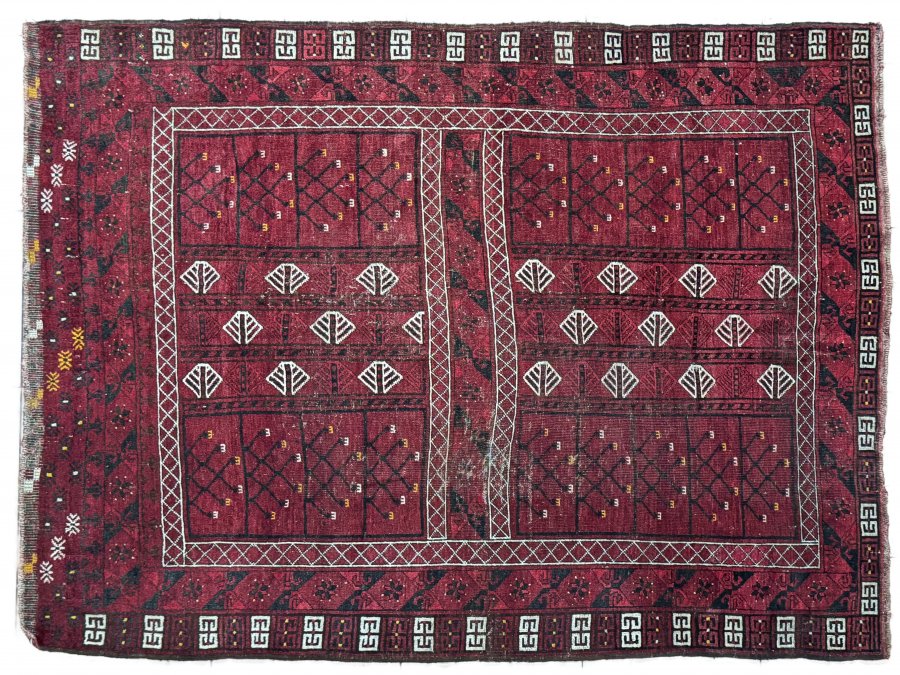Lot 115
ERSARI ENGSI RUG
Around 1920
wool
210 x 167 cm (h x w)
| 83 €
To bid in online auction, please register on auction server livebid.cz.
| 354 €
A typical example of hand tying of the Turkmen Ersari tribe. The so-called 'engsi', designed mainly to cover the entrance to the circular yurt (or kibitka), has changed only minimally over the centuries and is characterised by its strictly geometric iconography. In the mostly brick-red ground of the four rectangular central segments, divided by a cross, what is particularly striking are the numerous and stylized 'ram's horns' in the colour of dark indigo - these elements, however, are called 'insi kuš' in tribal symbolism and in fact represent stylized birds, among other things, the link between heaven and earth. The central composition of the 'hachlu' is a broad cross, whose meaning is to protect the dwelling from the so-called evil eye and is devoid of Christian connotations. Some of the highly geometric motifs throughout the rug design include stylised flowers, trees and good luck charms. The Turkmens were masters of the craft, excelling in the fantastic workmanship of sheep's wool, which they hand-spun and also dyed using only natural ingredients from steppe and mountain plants; our rug is also dyed in a purely natural way (and most likely with dye - the tiny yellow elements are typical of the Ersari tribe). The attractiveness of the carpet is enhanced by three types of borders, the main one with beautiful star-shaped flowers. According to the composition and colours, the carpet originated with the Turkmen Ersari tribal group, settled in northern Afghanistan. Professionally cleaned on both sides.
More works from auction
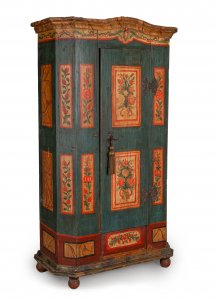
Lot 1 PAINTED FOLK WARDROBE
Starting price3 000 CZK | 125 €
Price realized
15 000 CZK | 625 €
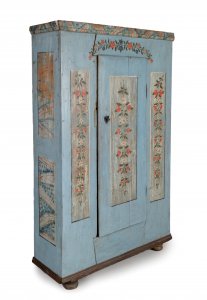
Lot 2 PAINTED FOLK WARDROBE
Starting price3 000 CZK | 125 €
Price realized
11 000 CZK | 458 €
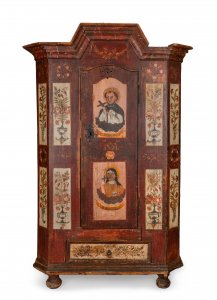
Lot 3 PAINTED FOLK WARDROBE
Starting price3 000 CZK | 125 €
Price realized
7 000 CZK | 292 €
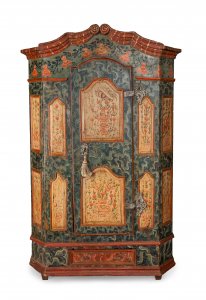
Lot 4 PAINTED FOLK WARDROBE
Starting price3 000 CZK | 125 €
Price realized
23 000 CZK | 958 €
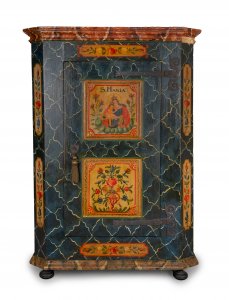
Lot 5 PAINTED FOLK WARDROBE
Starting price3 000 CZK | 125 €
Price realized
10 000 CZK | 417 €
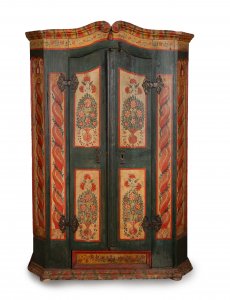
Lot 6 PAINTED FOLK WARDROBE
Starting price3 000 CZK | 125 €
Price realized
14 000 CZK | 583 €
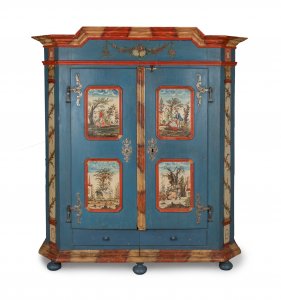
Lot 7 PAINTED FOLK WARDROBE
Starting price3 000 CZK | 125 €
Price realized
16 000 CZK | 667 €
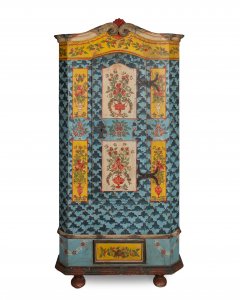
Lot 8 PAINTED FOLK WARDROBE
Starting price3 000 CZK | 125 €
Price realized
24 000 CZK | 1 000 €
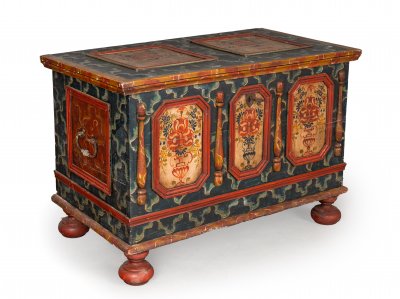
Lot 9 PAINTED FOLK CHEST
Starting price3 000 CZK | 125 €
Price realized
8 000 CZK | 333 €
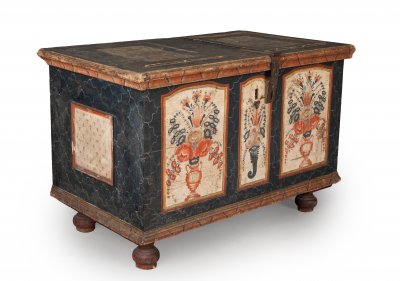
Lot 10 PAINTED FOLK CHEST
Starting price3 000 CZK | 125 €
Price realized
7 000 CZK | 292 €
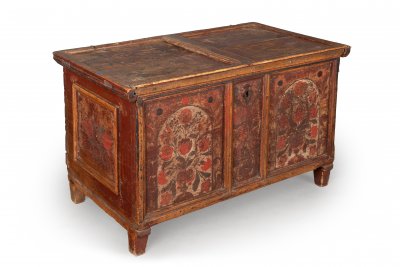
Lot 11 PAINTED FOLK CHEST
Starting price2 000 CZK | 83 €
Price realized
4 500 CZK | 188 €
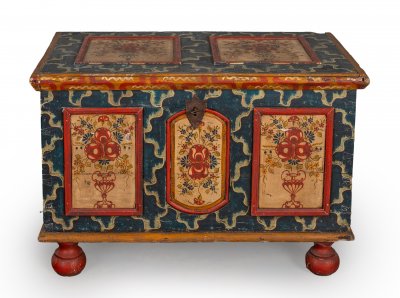
Lot 12 PAINTED FOLK CHEST
Starting price3 000 CZK | 125 €
Price realized
8 500 CZK | 354 €
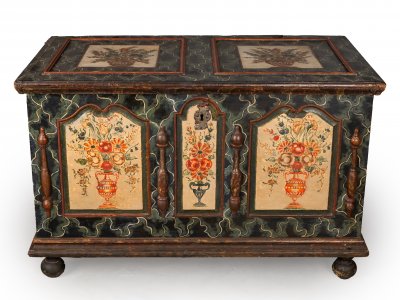
Lot 13 PAINTED FOLK CHEST
Starting price3 000 CZK | 125 €
Price realized
8 500 CZK | 354 €
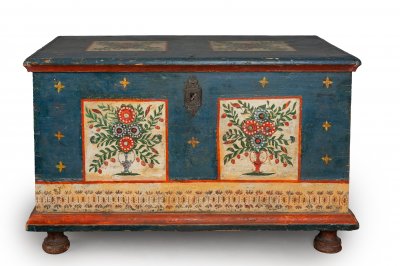
Lot 14 PAINTED FOLK CHEST
Starting price3 000 CZK | 125 €
Price realized
21 000 CZK | 875 €
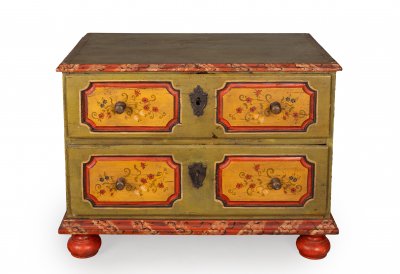
Lot 15 MALOVANÁ LIDOVÁ KOMODA
Starting price2 000 CZK | 83 €
Price realized
6 000 CZK | 250 €
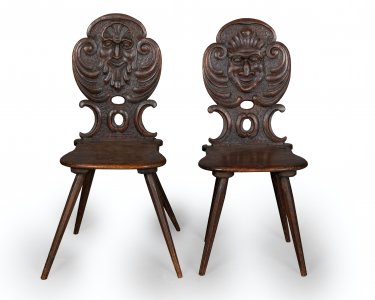
Lot 16 TWO FOLK CHAIRS
Starting price2 000 CZK | 83 €
Price realized
8 000 CZK | 333 €
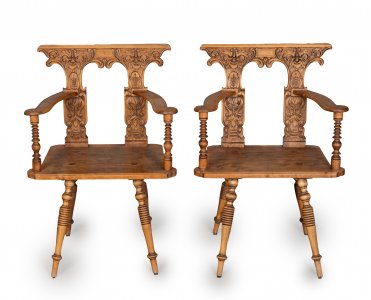
Lot 17 TWO FOLK CHAIRS WITH ARMRESTS
Starting price3 000 CZK | 125 €
Price realized
3 500 CZK | 146 €
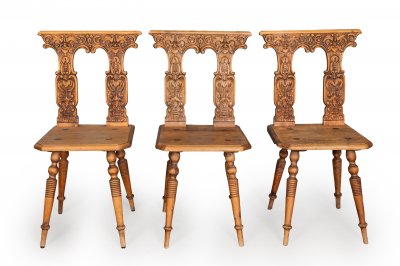
Lot 18 A SET OF THREE FOLK CHAIRS
Starting price3 000 CZK | 125 €
Price realized
5 000 CZK | 208 €
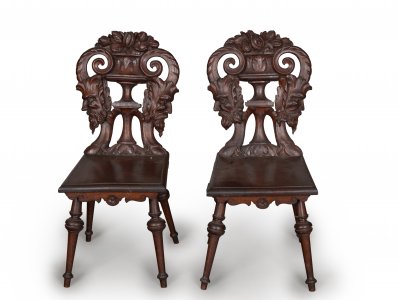
Lot 19 PAIR OF FOLK CHAIRS
Starting price2 000 CZK | 83 €
Price realized
10 000 CZK | 417 €
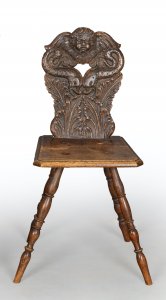
Lot 20 FOLK CHAIR
Starting price2 000 CZK | 83 €
Price realized
8 500 CZK | 354 €
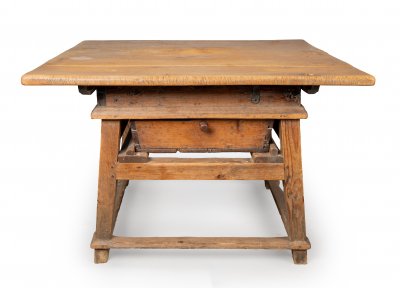
Lot 21 BUTCHER TABLE
Starting price3 000 CZK | 125 €
Price realized
11 000 CZK | 458 €
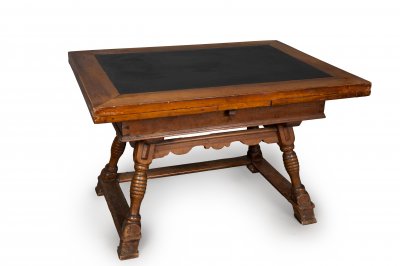
Lot 22 BAROQUE FOLDING TABLE
Starting price3 000 CZK | 125 €
Price realized
5 500 CZK | 229 €
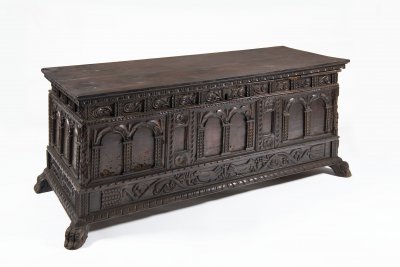
Lot 23 RENAISSANCE CHEST
Starting price3 000 CZK | 125 €
Price realized
16 000 CZK | 667 €
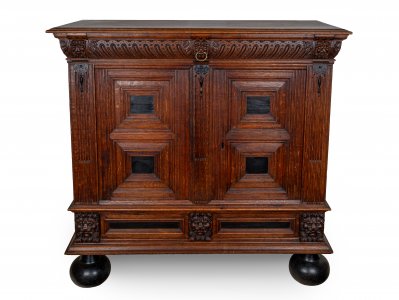
Lot 24 RENAISSANCE CUPBOARD
Starting price3 000 CZK | 125 €
Price realized
31 000 CZK | 1 292 €
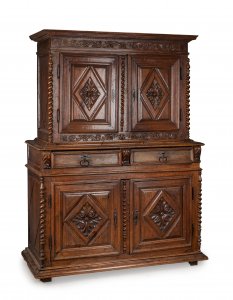
Lot 25 LATE RENAISSANCE SIDEBOARD
Starting price3 000 CZK | 125 €
Price realized
31 000 CZK | 1 292 €
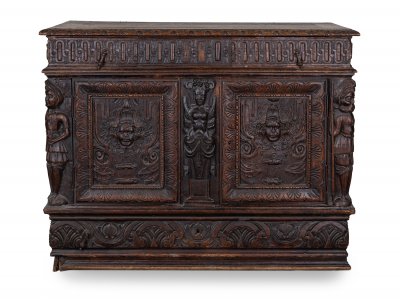
Lot 26 LATE MANNERIST CHEST OF DRAWERS
Starting price5 000 CZK | 208 €
Price realized
60 000 CZK | 2 500 €
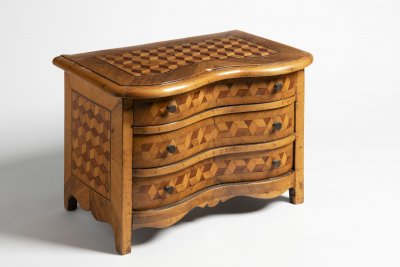
Lot 27 BAROQUE CHEST OF DRAWERS MINIATURE
Starting price2 000 CZK | 83 €
Price realized
9 500 CZK | 396 €
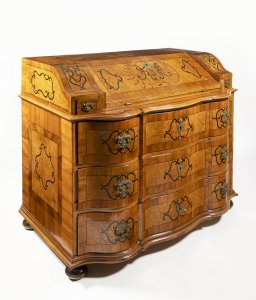
Lot 28 IMPRESSIVE ROCOCO BUREAU
Starting price5 000 CZK | 208 €
Price realized
39 000 CZK | 1 625 €
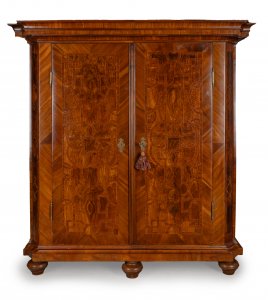
Lot 29 IMPRESSIVE BAROQUE WARDROBE
Starting price5 000 CZK | 208 €
Price realized
25 000 CZK | 1 042 €
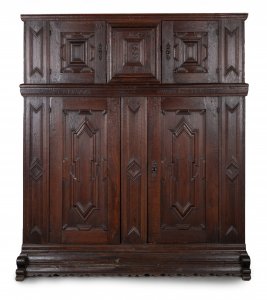
Lot 30 LATE BAROQUE WARDROBE
Starting price3 000 CZK | 125 €
Price realized
8 000 CZK | 333 €
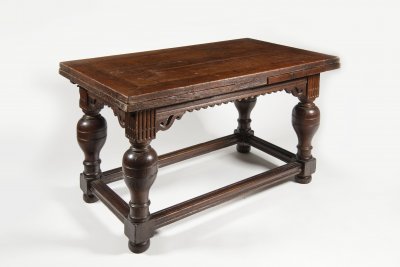
Lot 31 BAROQUE FOLDING TABLE
Starting price3 000 CZK | 125 €
Price realized
30 000 CZK | 1 250 €
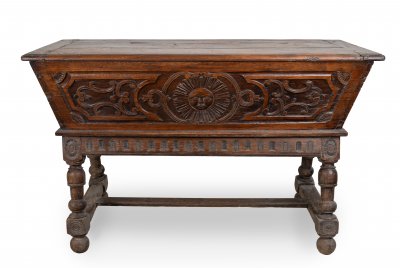
Lot 32 BAROQUE TROUGH
Starting price3 000 CZK | 125 €
Price realized
16 000 CZK | 667 €
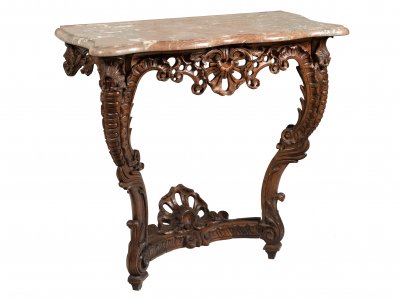
Lot 33 BAROQUE CONSOLE TABLE
Starting price4 000 CZK | 167 €
Price realized
27 000 CZK | 1 125 €
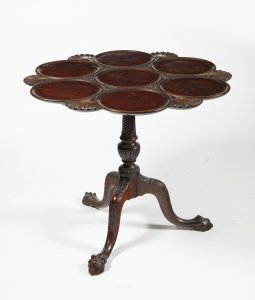
Lot 34 BAROQUE ENGLISH CARD TABLE
Starting price4 000 CZK | 167 €
Price realized
8 500 CZK | 354 €
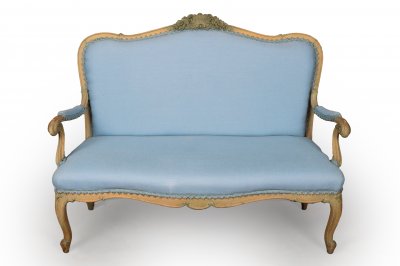
Lot 35 BAROQUE STYLE SOFA
Starting price2 000 CZK | 83 €
Price realized
2 000 CZK | 83 €
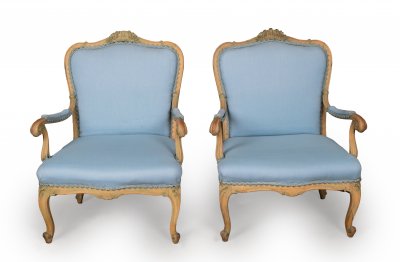
Lot 36 BAROQUE STYLE ARMCHAIRS
Starting price2 000 CZK | 83 €
Price realized
2 500 CZK | 104 €
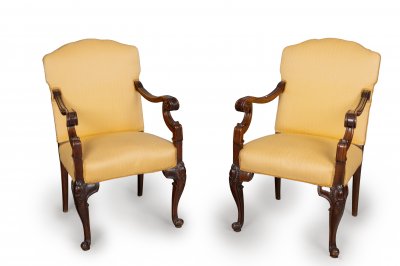
Lot 37 TWO BAROQUE STYLE ARMCHAIRS
Starting price2 000 CZK | 83 €
Price realized
5 000 CZK | 208 €
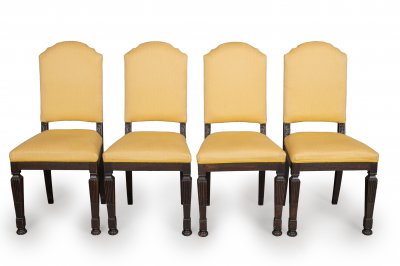
Lot 38 SET OF FOUR HISTORISM CHAIRS
Starting price2 000 CZK | 83 €
Price realized
2 500 CZK | 104 €
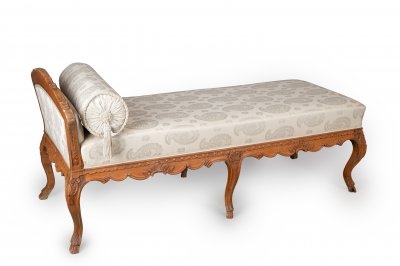
Lot 39 BAROQUE STYLE SOFA
Starting price2 000 CZK | 83 €
Price realized
9 500 CZK | 396 €
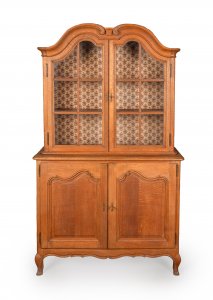
Lot 40 BAROQUE STYLE SCREEN
Starting price1 000 CZK | 42 €
Price realized
9 000 CZK | 375 €
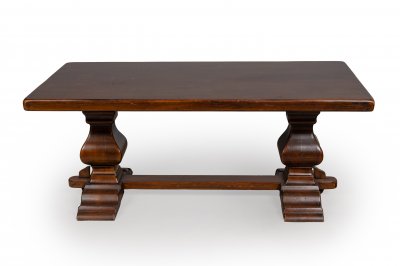
Lot 41 RENAISSANCE STYLE SIDE TABLE
Starting price1 000 CZK | 42 €
Price realized
2 500 CZK | 104 €
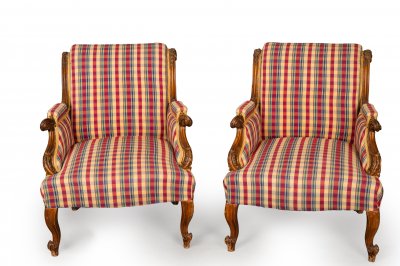
Lot 42 TWO LOUIS XV STYLE ARMCHAIRS
Starting price3 000 CZK | 125 €
Price realized
5 500 CZK | 229 €
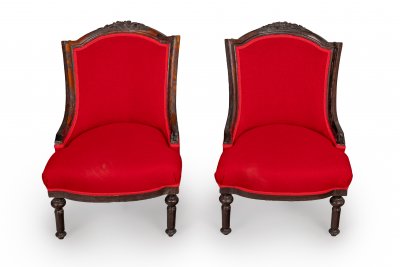
Lot 43 TWO HISTORICISM CHAIRS
Starting price1 000 CZK | 42 €
Price realized
1 000 CZK | 42 €
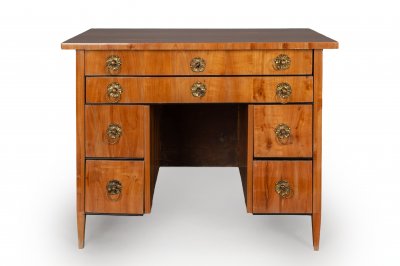
Lot 44 BIEDERMEIER WRITING DESK
Starting price2 000 CZK | 83 €
Price realized
17 000 CZK | 708 €
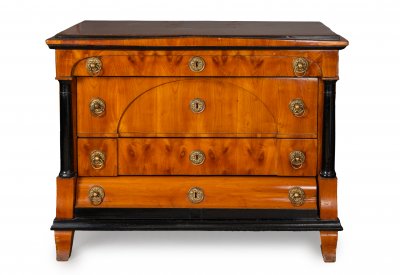
Lot 45 BIEDERMEIER CHEST OF DRAWERS
Starting price3 000 CZK | 125 €
Price realized
65 000 CZK | 2 708 €
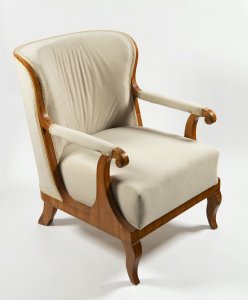
Lot 46 BIEDERMEIER ARMCHAIR
Starting price2 000 CZK | 83 €
Price realized
8 500 CZK | 354 €
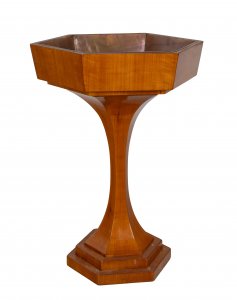
Lot 47 LARGE JARDINIERE IN BIEDERMEIER STYLE
Starting price3 000 CZK | 125 €
Price realized
15 000 CZK | 625 €
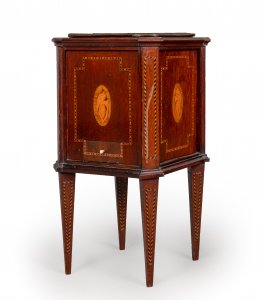
Lot 48 CLASSICAL JARDINIERE
Starting price2 000 CZK | 83 €
Price realized
7 000 CZK | 292 €
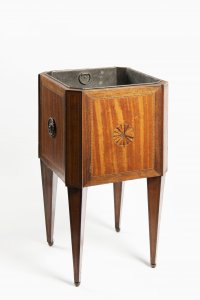
Lot 49 CLASSICAL JARDINIERE
Starting price2 000 CZK | 83 €
Price realized
6 000 CZK | 250 €
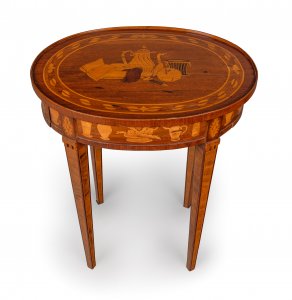
Lot 50 CLASSICAL TEA TABLE
Starting price2 000 CZK | 83 €
Price realized
12 000 CZK | 500 €
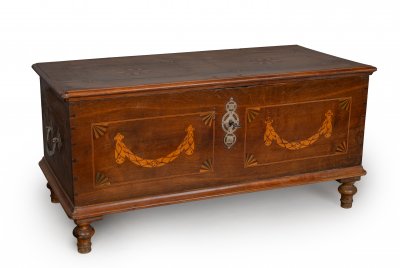
Lot 51 CLASSICAL FOLK CHEST
Starting price2 000 CZK | 83 €
Price realized
9 000 CZK | 375 €
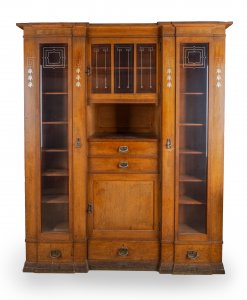
Lot 52 ART NOUVEAU DISPLAY
Starting price3 000 CZK | 125 €
Price realized
29 000 CZK | 1 208 €
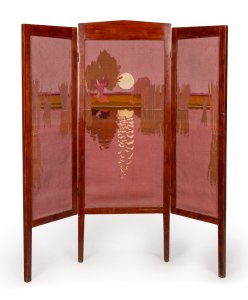
Lot 53 ART NOUVEAU SCREEN
Starting price3 000 CZK | 125 €
Price realized
10 000 CZK | 417 €
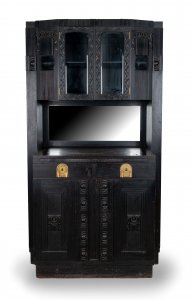
Lot 54 ART NOUVEAU SIDEBOARD
Starting price4 000 CZK | 167 €
Price realized
10 000 CZK | 417 €
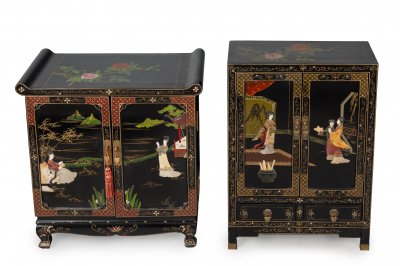
Lot 55 TWO CHINESE BEDSIDE TABLES
Starting price2 000 CZK | 83 €
Price realized
8 500 CZK | 354 €
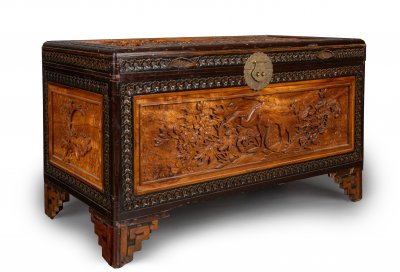
Lot 56 ASIAN CHEST
Starting price2 000 CZK | 83 €
Price realized
5 500 CZK | 229 €
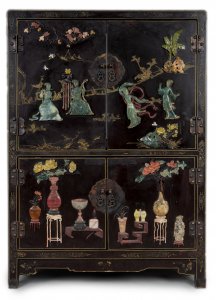
Lot 57 CHINESE CABINET
Starting price3 000 CZK | 125 €
Price realized
30 000 CZK | 1 250 €
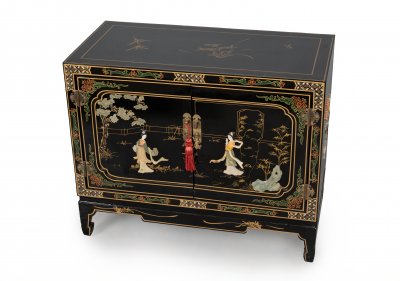
Lot 58 SMALL CHINESE CABINET
Starting price1 000 CZK | 42 €
Price realized
7 000 CZK | 292 €
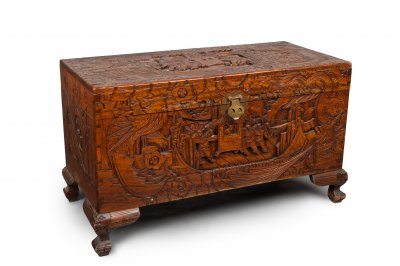
Lot 59 CHINESE CHEST
Starting price1 000 CZK | 42 €
Price realized
4 500 CZK | 188 €
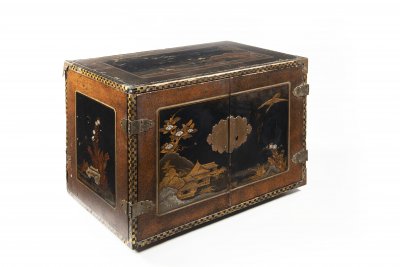
Lot 60 JAPANESE EDO PERIOD CABINET
Starting price4 000 CZK | 167 €
Price realized
11 000 CZK | 458 €
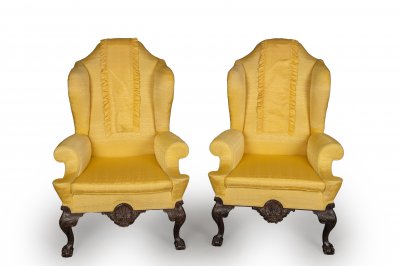
Lot 61 TWO QUEEN ANNE STYLE WING ARMCHAIRS
Starting price4 000 CZK | 167 €
Price realized
9 000 CZK | 375 €
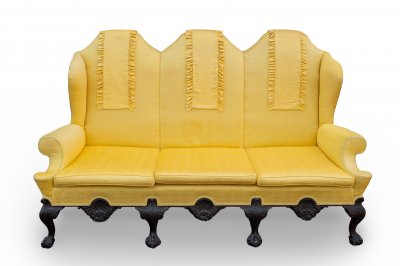
Lot 62 SOFA IN STYLE OF QUEEN ANNE
Starting price3 000 CZK | 125 €
Price realized
9 000 CZK | 375 €
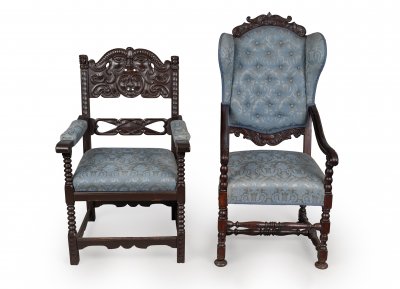
Lot 63 TWO HISTORISM ARMCHAIRS
Starting price3 000 CZK | 125 €
Price realized
3 000 CZK | 125 €
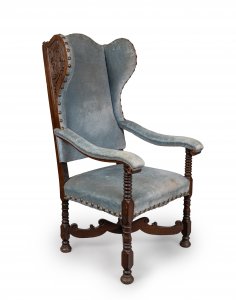
Lot 64 HISTORISM WING CHAIR
Starting price2 000 CZK | 83 €
Price realized
2 000 CZK | 83 €
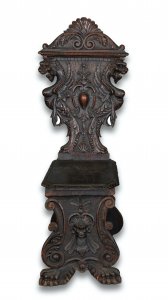
Lot 65 HISTORISM CHAIR
Starting price1 000 CZK | 42 €
Price realized
7 500 CZK | 313 €
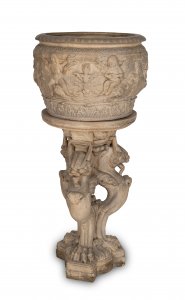
Lot 66 LARGE HISTORISM JARDINIERE
Starting price3 000 CZK | 125 €
Price realized
11 000 CZK | 458 €
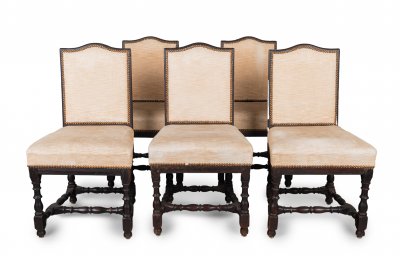
Lot 67 SET OF SIX CHAIRS
Starting price2 000 CZK | 83 €
Price realized
4 500 CZK | 188 €
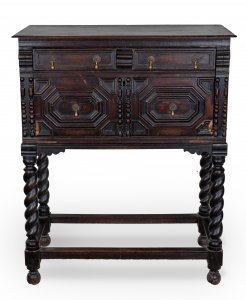
Lot 68 HISTORISM CABINET
Starting price2 000 CZK | 83 €
Price realized
10 000 CZK | 417 €
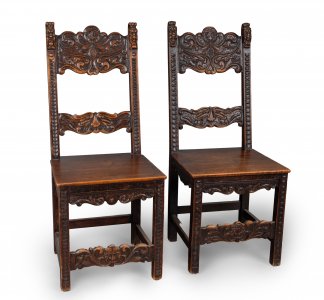
Lot 69 TWO RENAISSANCE STYLE CHAIRS
Starting price2 000 CZK | 83 €
Price realized
3 000 CZK | 125 €
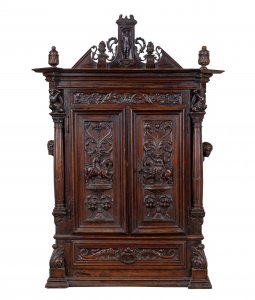
Lot 70 RENAISSANCE STYLE CABINET
Starting price4 000 CZK | 167 €
Price realized
15 000 CZK | 625 €
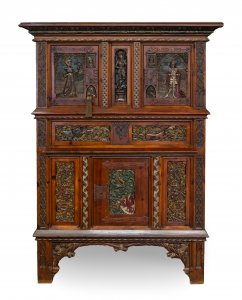
Lot 71 GOTHIC STYLE SIDEBOARD
Starting price4 000 CZK | 167 €
Price realized
28 000 CZK | 1 167 €
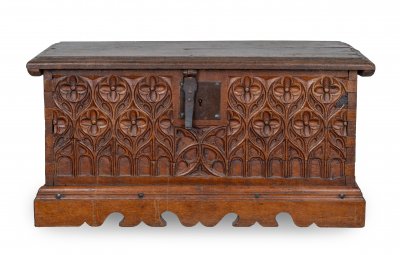
Lot 72 GOTHIC STYLE CHEST
Starting price3 000 CZK | 125 €
Price realized
9 000 CZK | 375 €
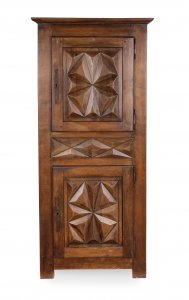
Lot 73 GOTHIC STYLE WARDROBE
Starting price2 000 CZK | 83 €
Price realized
8 500 CZK | 354 €
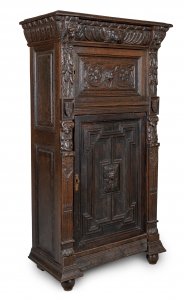
Lot 74 RENAISSANCE STYLE CABINET
Starting price3 000 CZK | 125 €
Price realized
5 500 CZK | 229 €
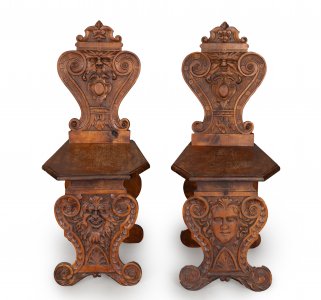
Lot 75 TWO RENSAISSANCE STYLE SGABELLO CHAIRS
Starting price2 000 CZK | 83 €
Price realized
7 000 CZK | 292 €
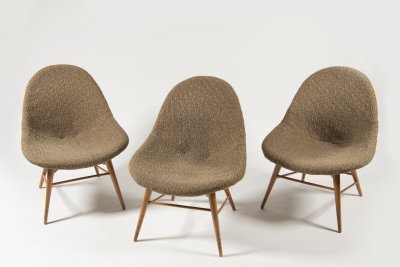
Lot 76 SET OF THREE DESIGN CHAIRS
Starting price3 000 CZK | 125 €
Price realized
4 500 CZK | 188 €
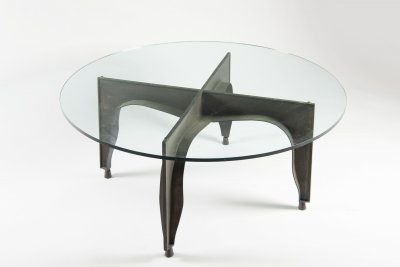
Lot 77 DESIGN COFFEE TABLE
Starting price4 000 CZK | 167 €
Price realized
9 500 CZK | 396 €
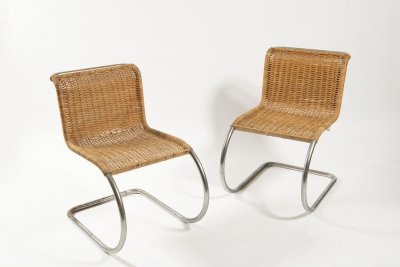
Lot 78 TWO DESIGN CHAIRS MR
Starting price3 000 CZK | 125 €
Price realized
18 000 CZK | 750 €
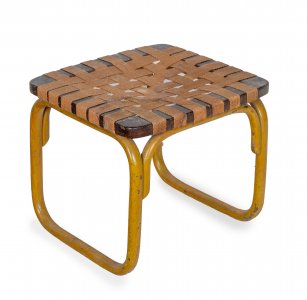
Lot 79 TABURET B313
Starting price1 000 CZK | 42 €
Price realized
2 500 CZK | 104 €
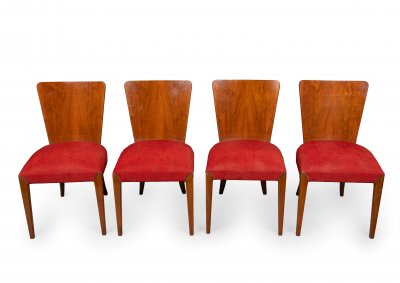
Lot 80 FOUR ART DECO STYLE CHAIRS
Starting price3 000 CZK | 125 €
Price realized
4 000 CZK | 167 €
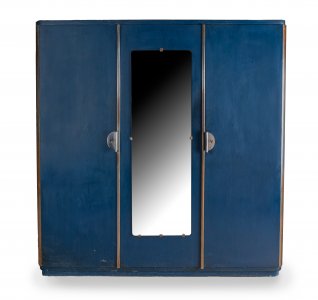
Lot 81 FUNCTIONALIST WARDROBE "VICHR"
Starting price4 000 CZK | 167 €
Price realized
10 000 CZK | 417 €
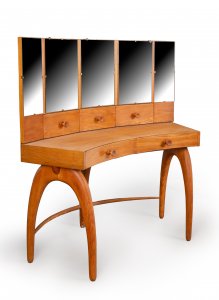
Lot 82 DRESSING TABLE WITH MIRROR
Starting price3 000 CZK | 125 €
Price realized
13 000 CZK | 542 €

Lot 83 FUNCTIONALIST SIDE TABLE
Starting price1 000 CZK | 42 €
Price realized
5 500 CZK | 229 €
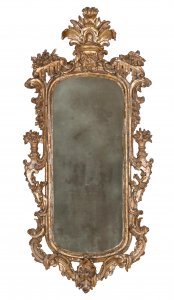
Lot 84 ROCOCO MIRROR
Starting price2 000 CZK | 83 €
Price realized
11 000 CZK | 458 €

